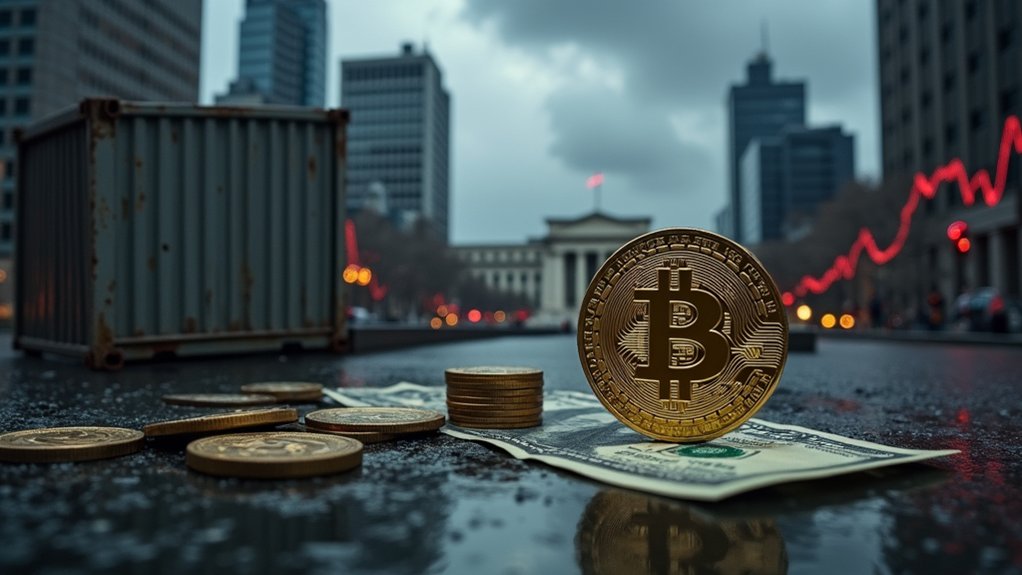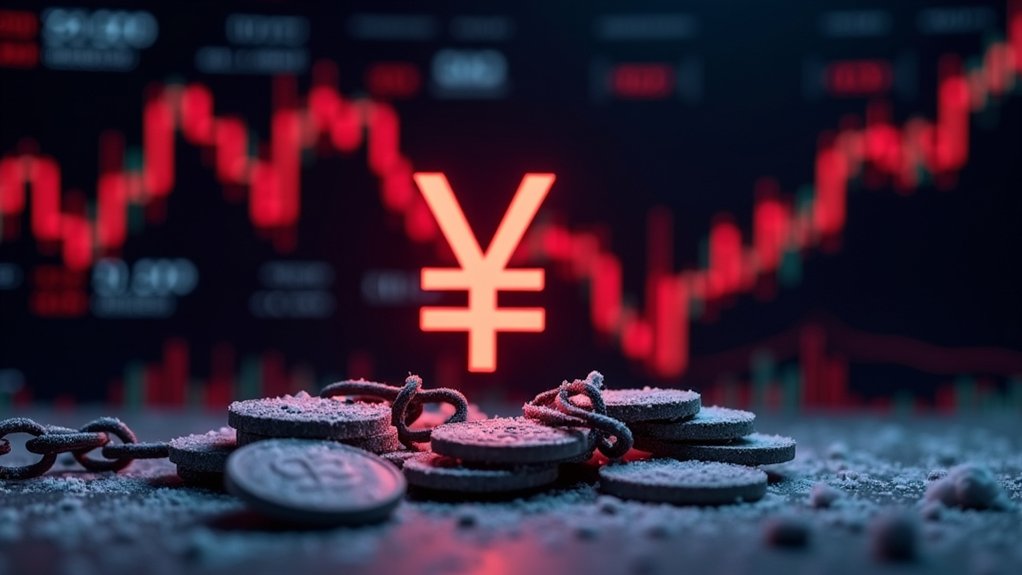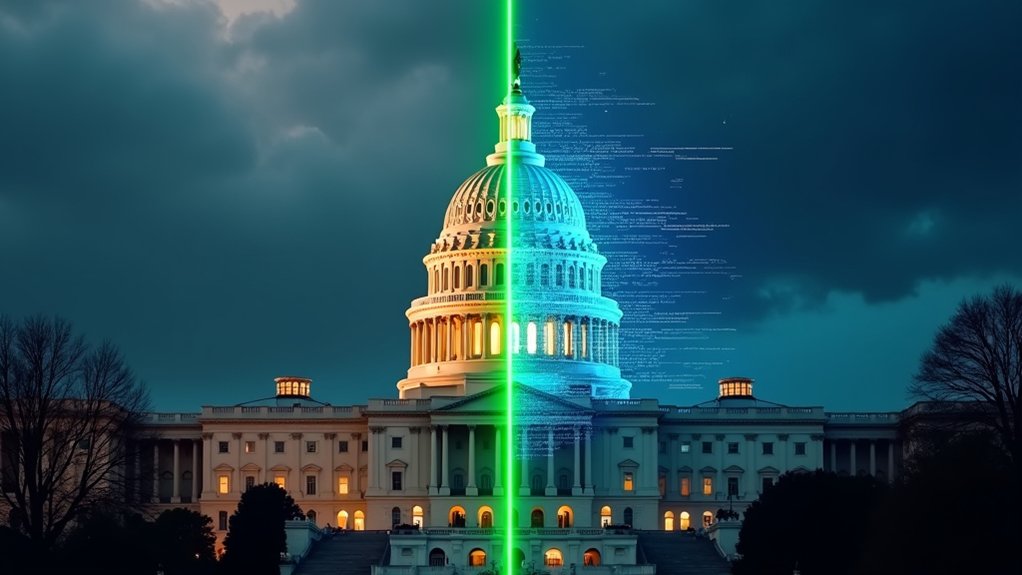As economic storm clouds gather on the horizon, analysts are sounding increasingly urgent alarms about America’s financial future. The numbers don’t lie. Tariffs are expected to slash U.S. GDP by 0.4%, with another 0.3% hit from threatened tariffs. That’s real money evaporating from the economy.
Markets have noticed. Equity trading floors look like panic rooms lately, with stocks in a rapid correction. Consumer confidence? In the toilet. Business outlook? Even worse. The smart money is betting on the Fed slashing rates – with a 30% chance of four cuts in 2025 alone. That’s not what a healthy economy needs.
Markets spiraling while investor confidence plummets. Smart money anticipates aggressive Fed cuts—a desperate remedy for a sickening economy.
The mighty dollar is stumbling too. Textbooks say tariffs should strengthen currency, but reality begs to differ. Our greenback is losing its “safe haven” status faster than politicians lose campaign promises. Long-term interest rates are sliding, a grim forecast for future growth. The stubborn inflation problem is likely to worsen significantly with higher tariffs on the horizon.
Meanwhile, 142,000 jobs have vanished thanks to tariff policies. Capital stock dropped by 0.1%. The total forecast is even more dire, with estimates projecting a loss of 545,000 full-time jobs across the economy. Small numbers hide big pain.
Prices? Going up, up, up. Tariffs act like negative supply shocks, pushing costs higher across the board. Long-term inflation expectations haven’t been this high in three decades. Gas could jump 50 cents per gallon in the Midwest. Lower-income Americans will feel this squeeze most acutely. Thanks, tariffs.
Strategic industries are taking hits where it hurts. AI ambitions stall when data centers cost more. Semiconductor innovation drags. Steel tariffs make our shipbuilding industry look like a rusty bathtub compared to competitors.
Globally, partners are moving on without us. The EU, UK, and others are cutting deals elsewhere. Our geo-economic power? Shrinking faster than ice cream on a summer sidewalk.
The outlook is bleak. The OECD sees growth falling to 1.6% by 2026. Nearly $1.4 trillion in imports will face tariffs by next April. Uncertainty reigns, investments stall, and competitiveness fades.
Recession isn’t just knocking – it’s picking the lock.





